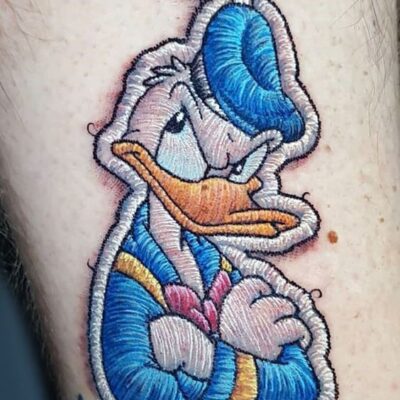

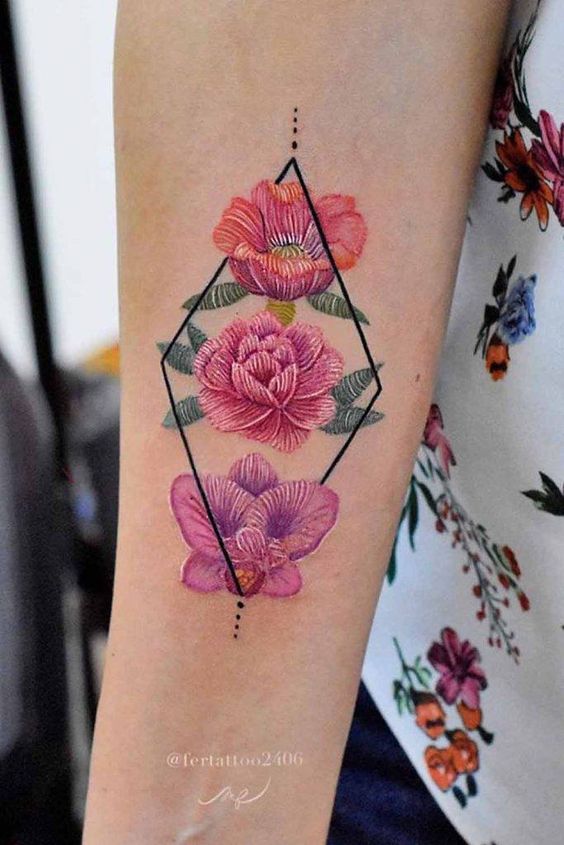
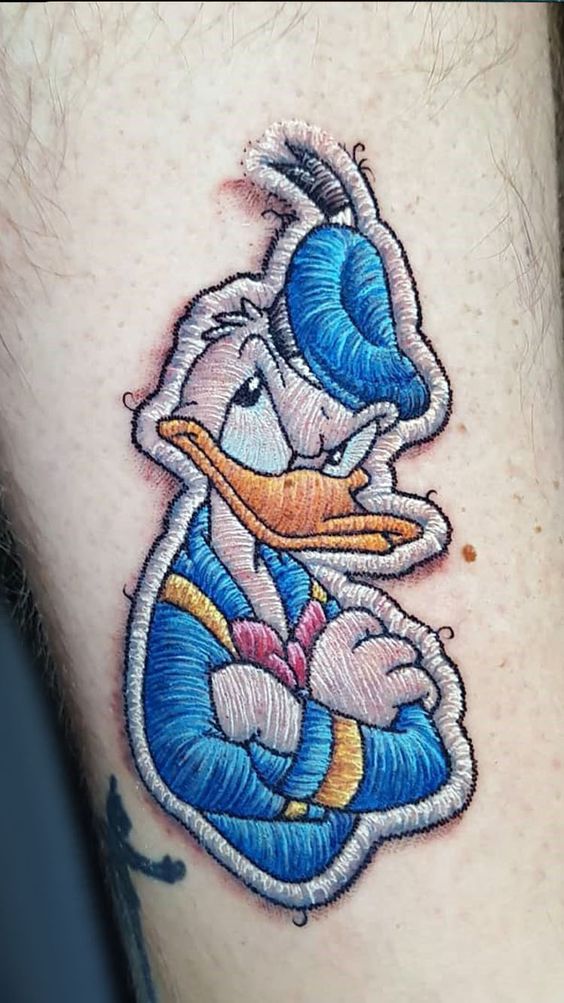
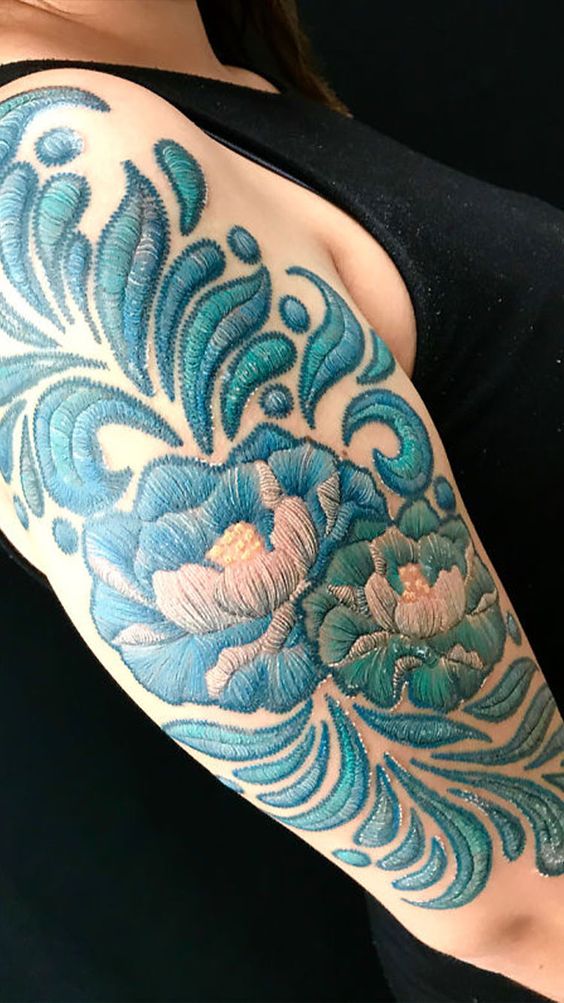
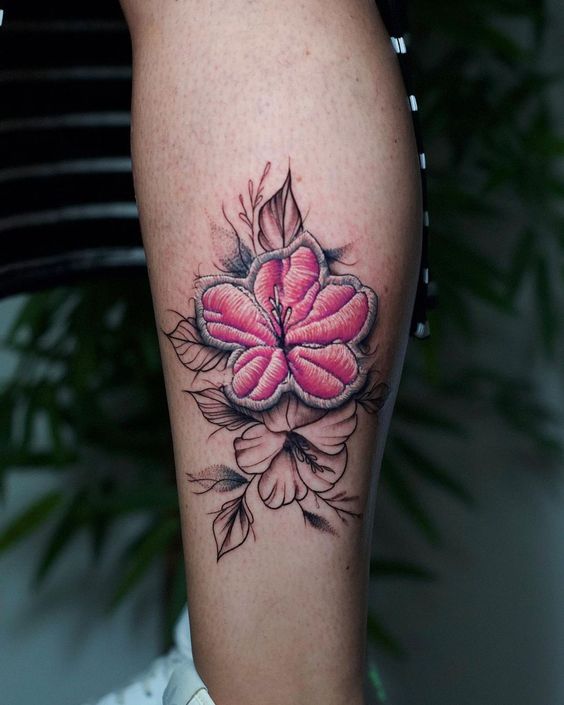

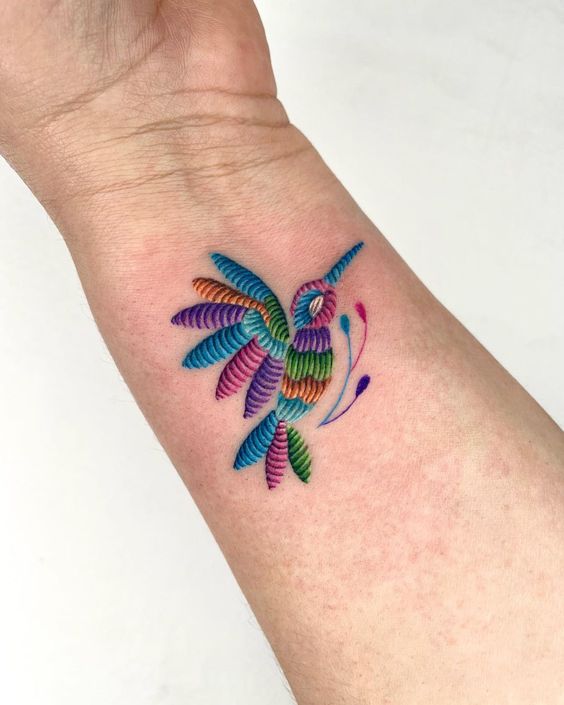
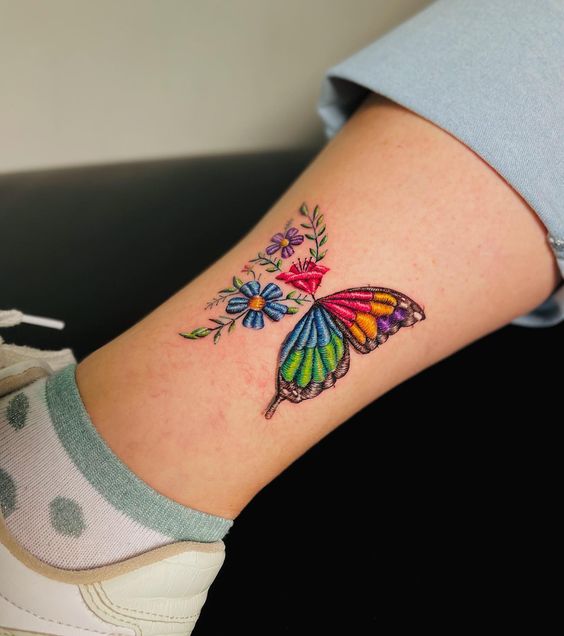
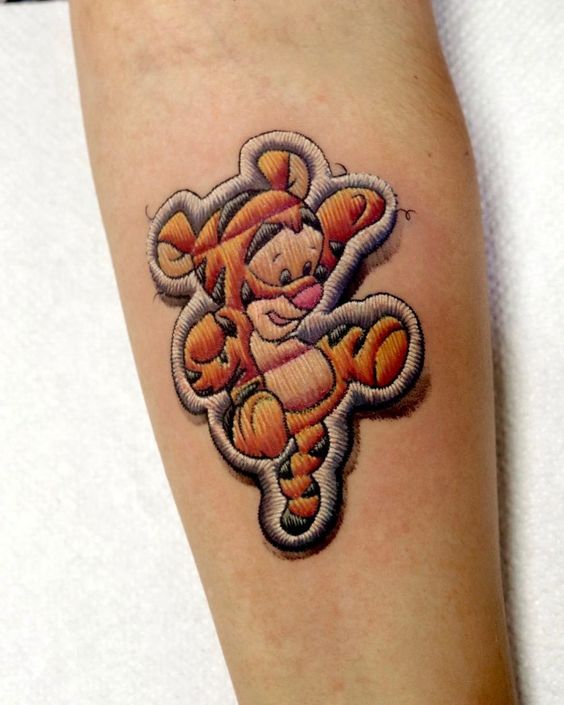
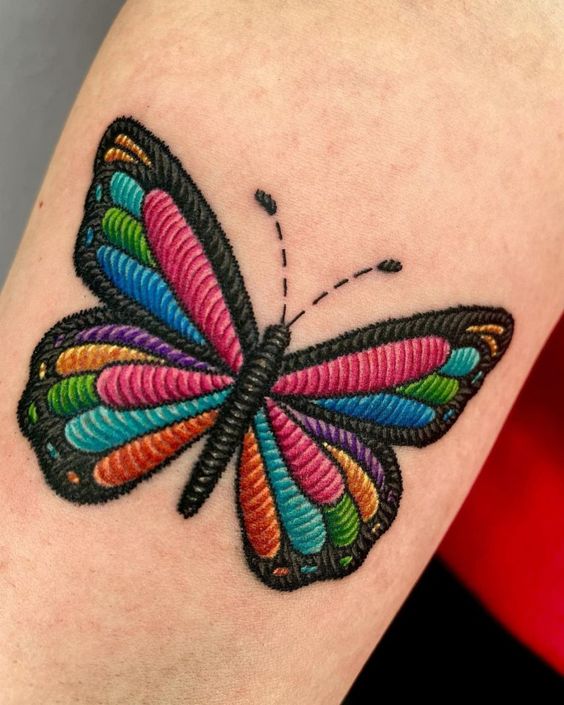
All image credit: Pinterest
Embroidery Tattoos: Tattooing has long been deemed as a form of artistic expression, with people using their bodies as canvases to show meaningful designs, symbols, and imagery. In recent years, a special style of tattooing has appeared that blurs the lines between traditional ink and textile art: embroidery tattoos. These tattoos mimic the intricate stitches and patterns found in embroidery, creating a lovely and textural effect on the skin.
Also See:
The Artistry of Embroidery Tattoos
Embroidery tattoos are proof of the skill and creativity of both the tattoo artist and the wearer. These designs usually feature delicate lines, intricate patterns, and vibrant colors, imitating the look and feel of embroidered fabric. From floral motifs to geometric patterns to intricate lacework, the options with embroidery tattoos are endless.
One of the most remarkable parts of embroidery tattoos is their ability to mimic the texture of actual embroidery. Skilled tattoo artists use shading and layering methods to create depth and dimension, giving the illusion of raised stitches and complex detailing. The result is a tattoo that not only looks visually impressive but also feels tactile and three-dimensional.
The Rise in Popularity
The favor of embroidery tattoos can be attributed to several factors. Firstly, the revival of interest in traditional crafts and artisanal methods has led people to enjoy the beauty and complexity of embroidery. By putting these designs into tattoos, people can carry a piece of this timeless art form with them wherever they go.
Moreover, embroidery tattoos present a unique twist on traditional tattoo styles, appealing to those who are drawn to unconventional and creative forms of body art. For many, these tattoos symbolize a fusion of two distinct art forms – tattooing and embroidery – resulting in a visually captivating and deeply personal piece of artwork.
Social media has also played a substantial role in popularizing embroidery tattoos, with platforms like Instagram showcasing the work of talented tattoo artists to a global audience. The intricate detail and aesthetic appeal of these tattoos make them highly shareable, leading to increased visibility and demand.
The Process and Technique
Creating an embroidery tattoo needs a high level of skill and precision on the part of the tattoo artist. Unlike traditional tattoos, which depend primarily on sketching and shading techniques, embroidery tattoos include detailed linework and fine detail to copy the look of stitched fabric.
To attain the desired effect, tattoo artists may use a combination of techniques, including stippling, dotwork, and fine-line tattooing.
By layering various shades and colors, they can create depth and dimension, imitating the formation of embroidered patterns.
The choice of ink colors is also important in gaining a realistic embroidery effect. Vibrant hues and subtle gradients are usually used to replicate the rich tones seen in embroidered textiles, adding to the visual effect of the tattoo.
Embracing Identity
One of the most appealing parts of embroidery tattoos is their versatility and adaptability to personal tastes and preferences. Whether it’s a small floral design on the wrist or a detailed tapestry-inspired piece spanning the back, embroidery tattoos can be tailored to suit any style or aesthetic.
Furthermore, embroidery tattoos present a unique way for people to express their personal stories and identities. From symbols of cultural heritage to tributes to loved ones to expressions of personal beliefs and values, these tattoos can carry deep meaning for the wearer.
In a world where self-expression is increasingly valued, embroidery tattoos provide a canvas for people to showcase their creativity and uniqueness. With each stitch and pattern carefully chosen, these tattoos act as wearable works of art, celebrating the beauty of both tattooing and embroidery.

